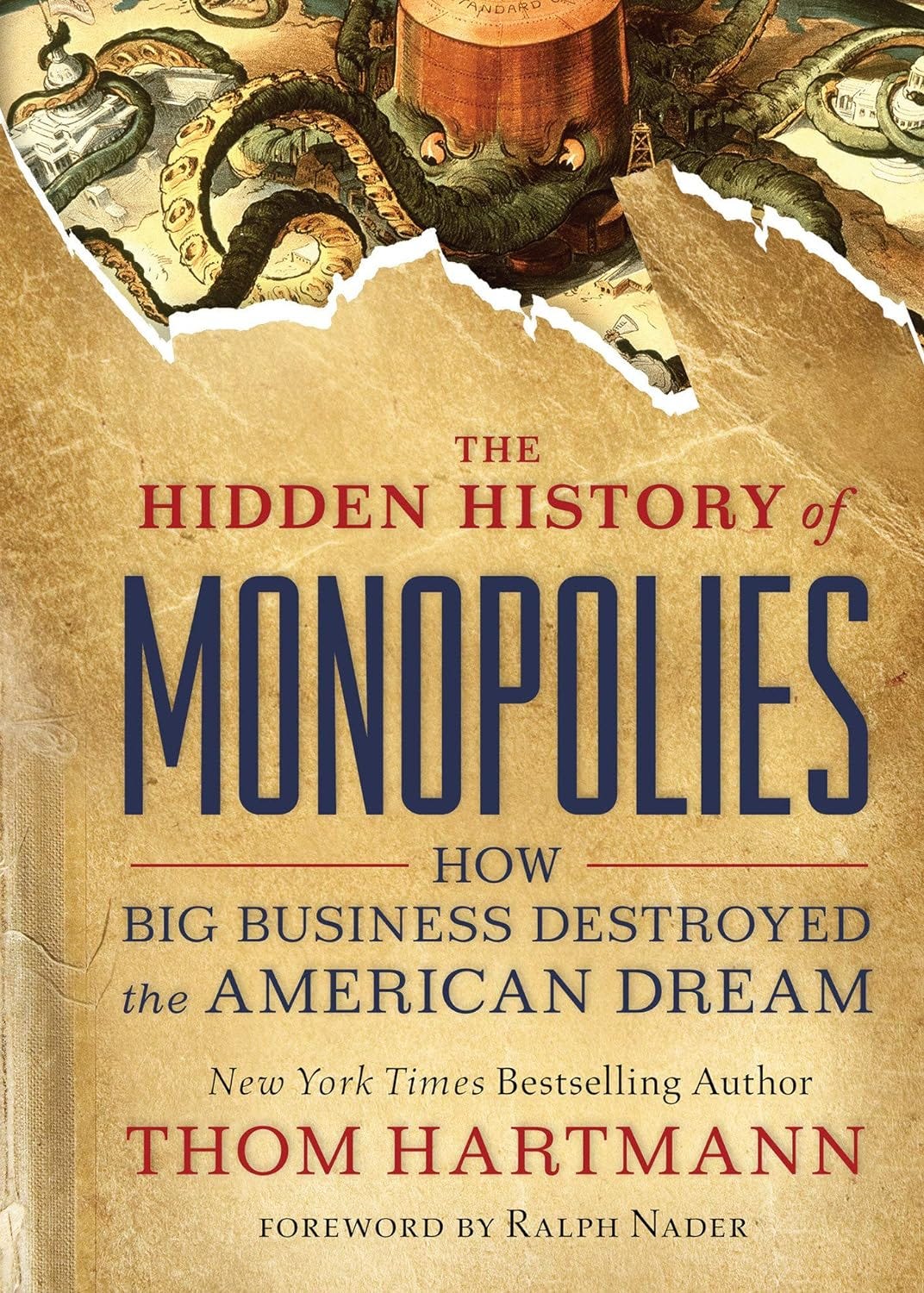Hospital Consolidation Kills
Your weekly excerpt from one of my books. This week: "The Hidden History of Monopolies: How Big Business Destroyed the American Dream"

Hospital Consolidation Kills
Cindy Anderson predicted that hospital consolidation in rural Missouri would kill people. At the time, she didn’t realize that her husband, Butch, would be one of its victims.
The first big wave of hospital consolidations happened in the wake of Reagan stopping enforcement of the Sherman Antitrust Act in 1983 and ran through the late 1990s. The second wave followed when the Affordable Care Act — written with plenty of input from the hospital industry — introduced more incentives to form monopolies in 2013.
Thus, while there were 1,412 hospital mergers between 1998 and 2015, 561 of them happened in just the 2010 to 2015 period.
The National Council on Compensation Insurance (NCCI) did a deep dive into the industry in 2018 and concluded that hospital mergers “can lead to operating cost reductions for acquired hospitals of 15%–30%” while increasing “the average price of hospital services by 6%–18%.” 13
As the number of hospitals shrinks—more than 150 rural hospitals have closed just since 2005—competition decreases, the number of people employed by hospitals falls, and prices (and profits) go up.
NCCI’s study found that there was not a single credible research study in America as of 2018 that showed that hospital mergers would improve “quality, access, or cost.” Instead, the organization found, “[m]ergers increase the likelihood of intensive surgery and total number of surgeries, but do not improve patient outcomes.” While mergers do “reduce hospital costs,” they noted, they do not “reduce the price of hospital care.”
In December 2019, Chris McGreal, a reporter for the Guardian, told the story of Cindy Anderson, who’d worked for 39 years at the Twin Rivers Hospital in rural Kennett, Missouri.14 The hospital had been acquired by Community Health Systems, which had just built a brand-new hospital 50 miles up the road in Poplar Bluff.
The Twin Rivers Hospital was making a profit—around $5 million in its last year of operation—but the CHS corporation apparently figured that shutting it down would drive people to its newer and more efficient hospital an hour away, lifting the new hospital into profitability. Increasing ambulance time to rural communities for emergencies like heart attacks, strokes, and car accidents didn’t appear to show up in their calculations.
When Twin Rivers was still open, Cindy’s husband, Butch, had a heart attack; the ambulance quickly got him to the hospital where his wife worked and he was saved. A few years later, after Twin Rivers closed in June 2018, Butch had another medical emergency; the trip to get care took much longer and he died before ever seeing a heart surgeon.
“How many more people have to die?” Cindy Anderson asked. “There are people dying in ambulances I think could have been saved.” A physician at the hospital for 29 years, Dr. Dave Jain, told McGreal, “We’re having probably three to five more deaths a month without having the hospital here.”
The town’s mayor, Dr. Chancellor Wayne, said that CHS closed the hospital “out of greed.” He noted that while he could send his patients to a hospital across the border in Arkansas for an $800 MRI, CHS’s fancy new hospital an hour up the highway charged $5,000.
Instead of putting the old hospital building up for sale or rent to anybody else who might have wanted to run a profit- able rural hospital, the company paid the property taxes, cut the power, stripped the building, and let it rot for a full year. Twelve months, it turns out, is the exact amount of time a building would have to remain empty to force any new company that wanted to run it to spend “millions of dollars in renovations for it to reopen as a medical facility.”
And the monopolists are on the move. Of the nation’s roughly 2,000 rural hospitals, an estimated 673 are at risk of closure, according to the National Rural Health Association.
When I grew up in Lansing, Michigan, there were three hospitals in the area, all nonprofits. One had been endowed in 1912 by a cofounder of the Oldsmobile car company, the second run by the Catholic Church, and the third run by the county. Now all three are controlled or run by for-profit entities.
Prior to the Reagan era, hospitals and insurance companies were mostly run as nonprofits, the idea being that they should serve people and communities instead of shareholders. They were considered close cousins of the natural commons revered by our Founders.
Although Richard Nixon is blamed for the rise of for-profit health insurance and hospitals (he signed a law legalizing for-profit HMOs in 1973), both industries were already creeping in the for-profit direction.
As Reagan simultaneously ended antitrust enforcement and deregulated the finance industry, he all but assured the rise of hospital (and health insurance) monopolies. The sharks moved in, bought up or forced out of business the true non-profits, and now largely control both fields.
Keep reading with a 7-day free trial
Subscribe to The Hartmann Report to keep reading this post and get 7 days of free access to the full post archives.

